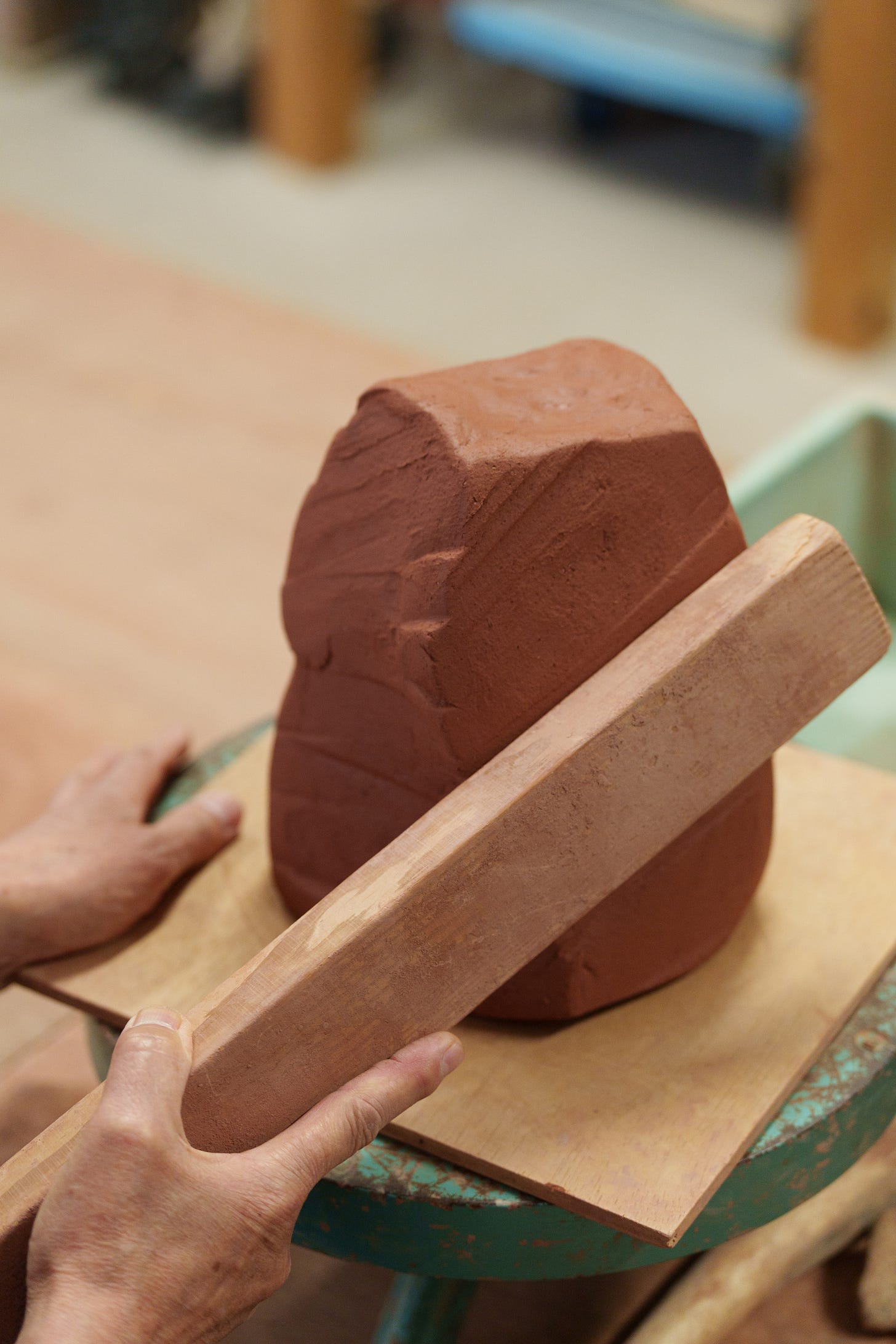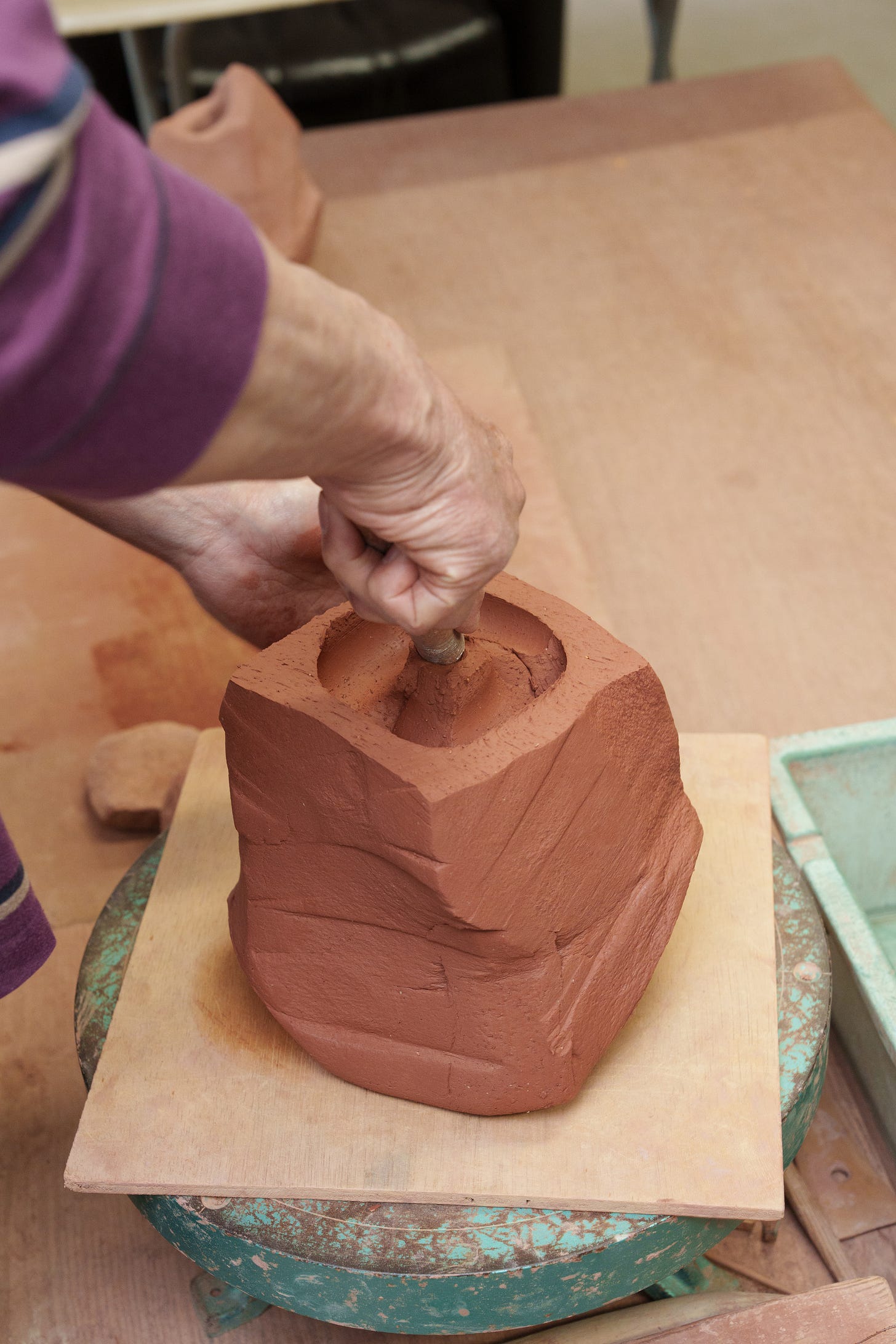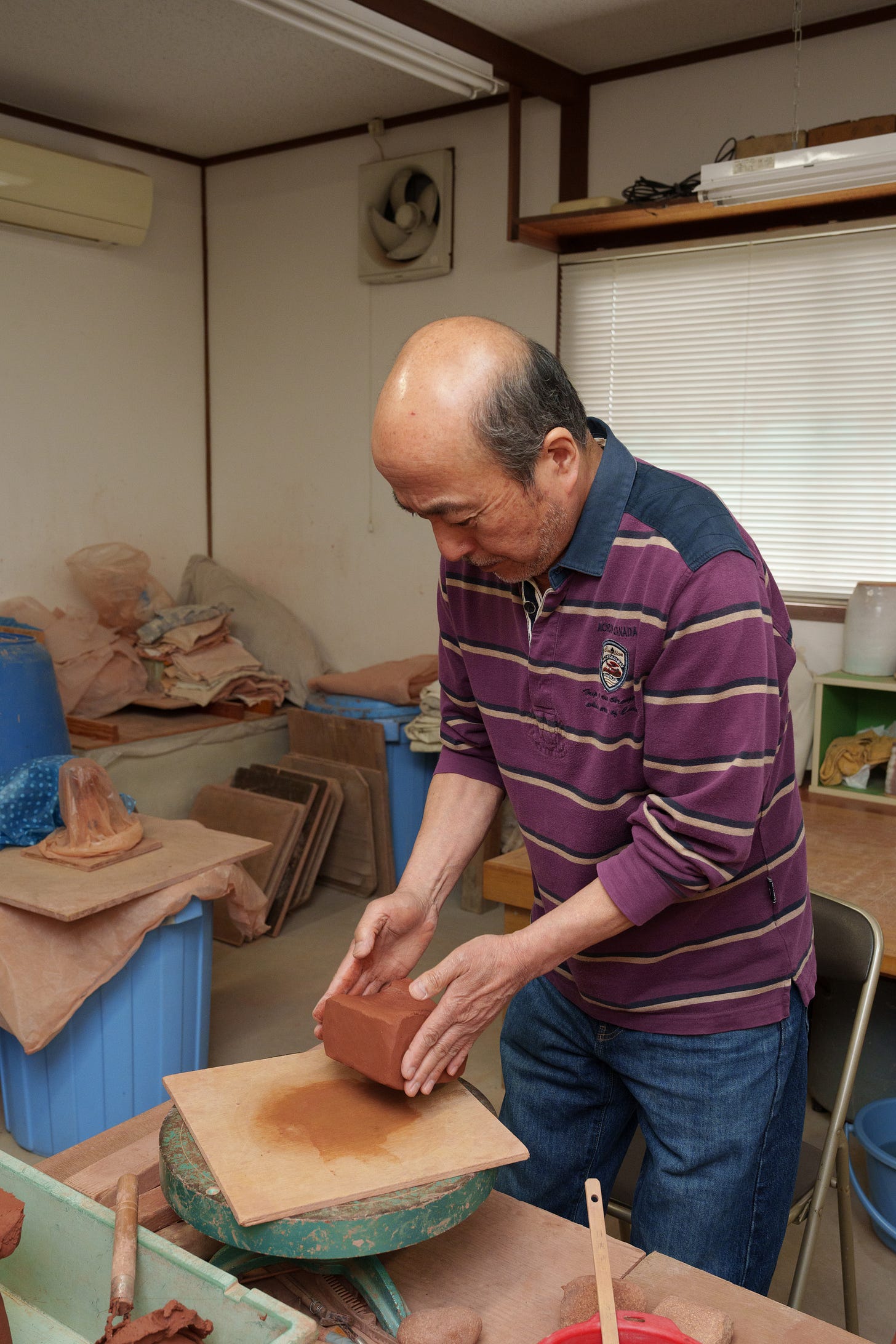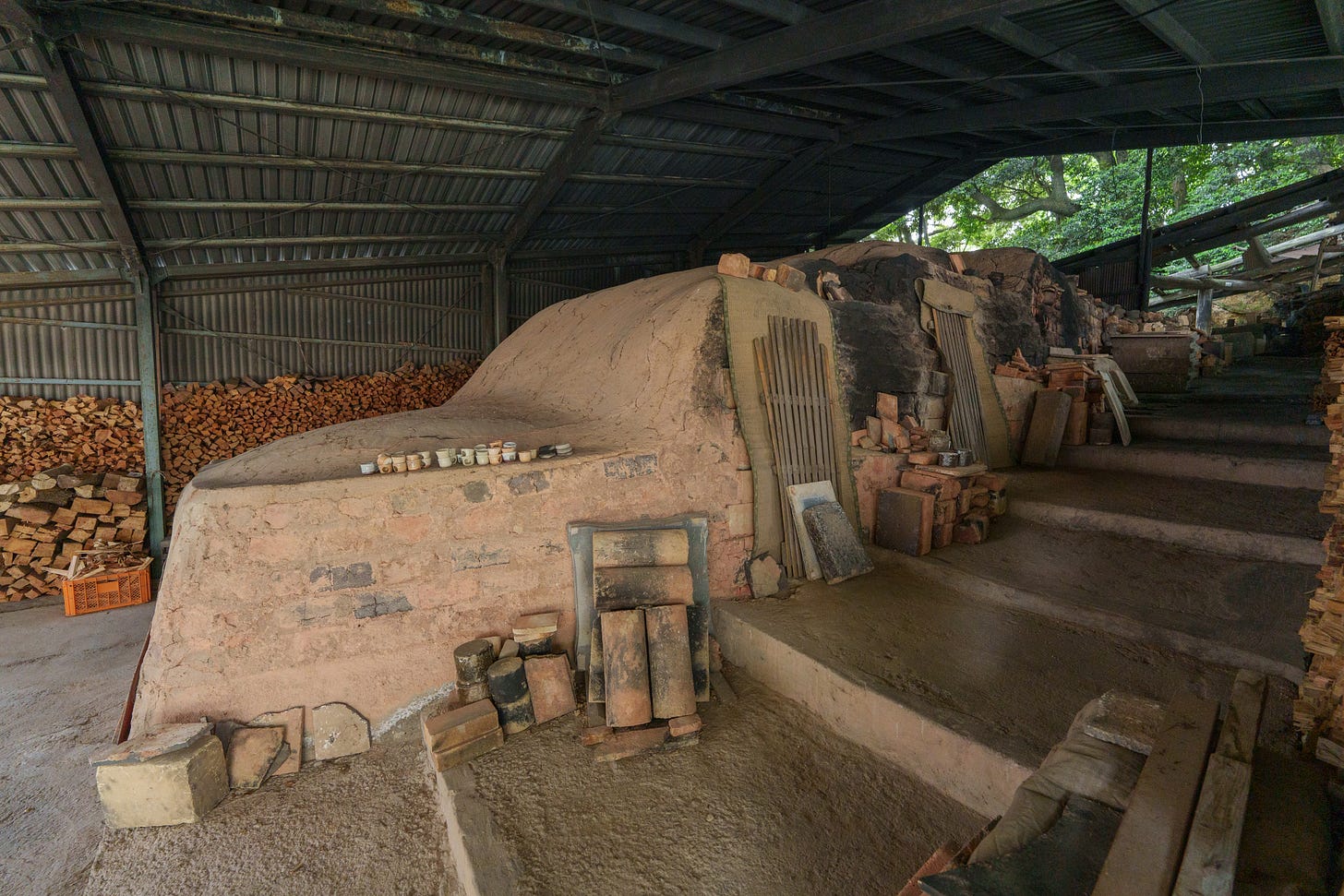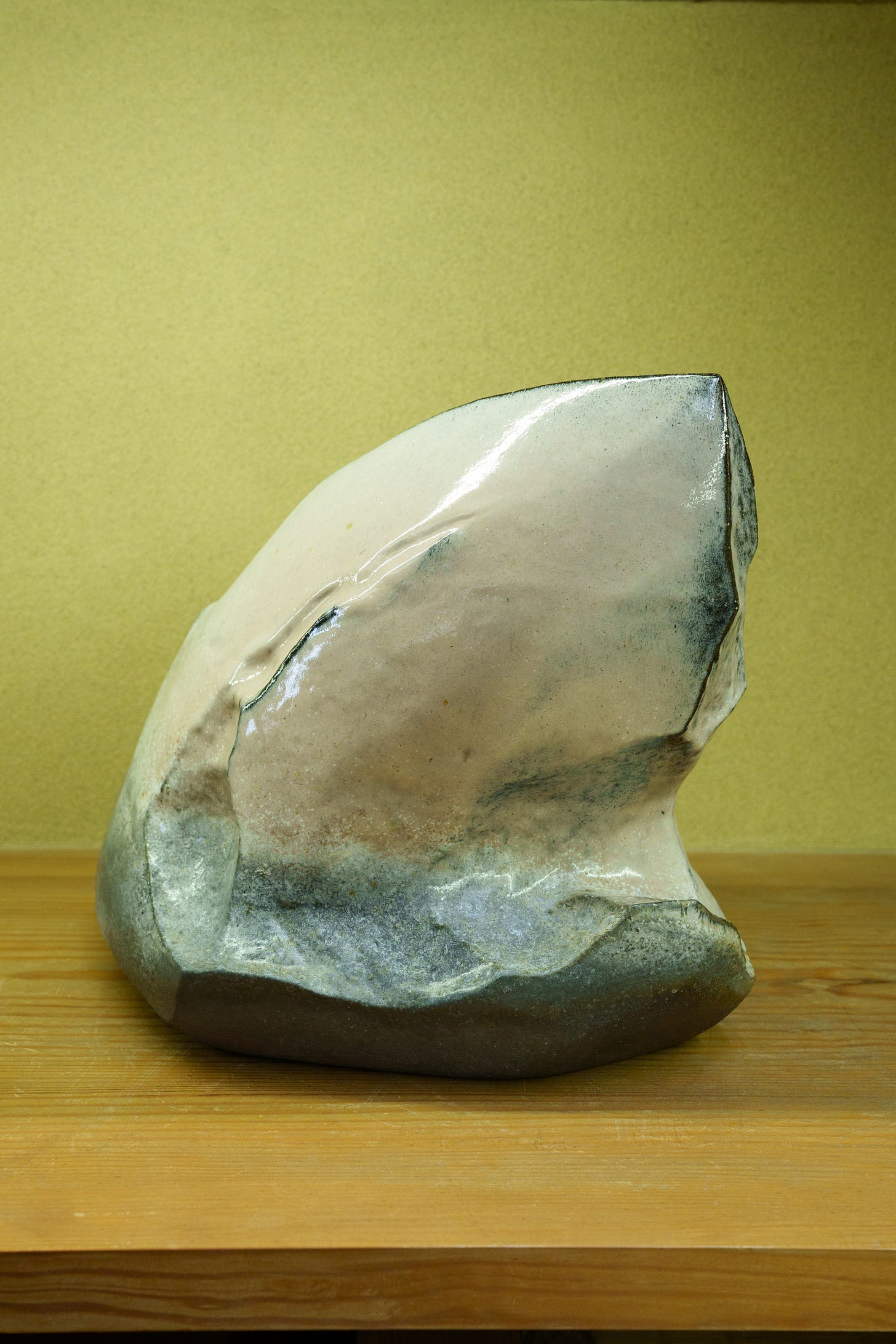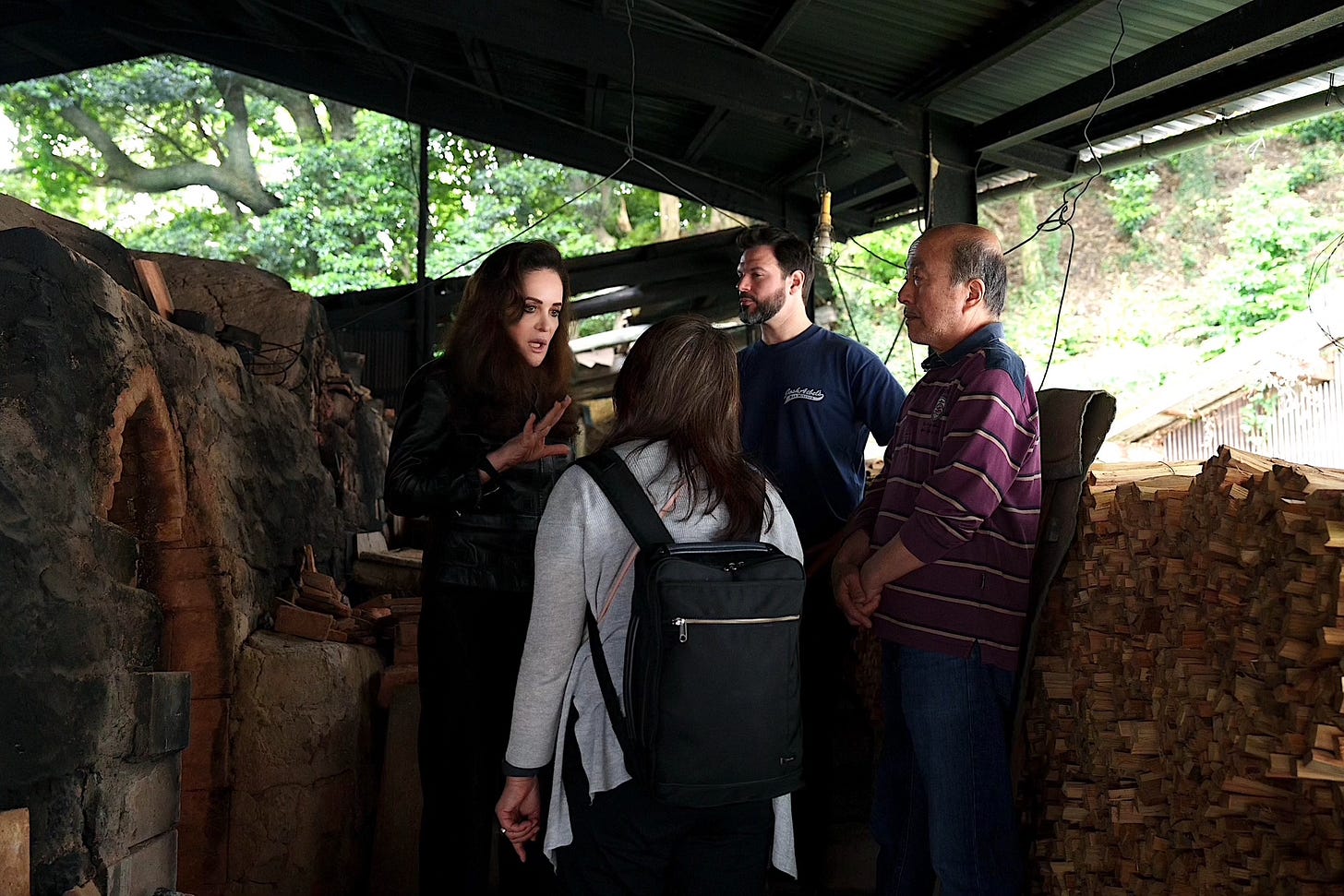Twisting Traditions: Kaneta Masanao
Cubism in Clay
Twisting Traditions
One of the most remarkable achievements of contemporary Japanese kogei, and one which sets it apart from historical practices of the craft, is the notion of twisting traditions and established practices. It is what has enabled Japanese kogei to transition from a tradition where crafts were exclusively used for everyday utensils to the use of craft mediums to create original contemporary art. While traditions have been central to the craft, practiced generation after generation with little change—tea bowls in clay, boxes in lacquer, an obi (belt for a kimono) in weaving, and baskets in bamboo—Japan’s craftspeople have learned from their ancestors, apprenticed with master craftsmen, and passionately preserved their time-tested methods. In fact, they are expected to continue the inherited traditions.
It is the recent generation of craftspeople that has revolutionized that continuity and shaken this stability. They have begun searching for their personal voice, pushing boundaries and introducing new ideas. While remaining true to the methods of the craft—paying great respect to their heritage—they have introduced daring and fearless new means of expression, thereby becoming participants in the global movement of contemporary art. The craftspeople featured in this section about my journey in Japan have completely transformed traditions, introducing a new spirit and taking the world of Japanese crafts to new horizons.
Kaneta Masanao (b. 1953)
Born in Hagi, a coastal town located across from the Korean Peninsula on the Sea of Japan, Kaneta Masanao is an eighth-generation potter who has forged his own voice within the ancient tradition of Hagi’s ceramics world, creating a sculptural and contemporary language like no other. Since the 19th century, the Masanao family’s kiln was situated in the mountains, serving six generations, until Masanao’s father moved the kiln into the town of Hagi. Hagi has become one of Japan’s most productive centers of pottery, dating back to the 16th century, when Korean potters arrived via the Sea of Japan and settled in the village. It was following Japan’s military invasion of the Korean Peninsula that many craftsmen were captured and exiled in Japan, where they established pottery kilns in various regions, including Hagi. Hagi’s local clay is reddish in color, and the town is primarily known for its distinctive white glaze, developed by the local Miwa family in the 1980s, which has since become synonymous with Hagi-ware.
Masanao’s vessels are cubistic and fragmented, characterized by powerful, three-dimensional forms that are broken down into geometric shapes and sharp angles, offering multiple perspectives. Both his shapes and methods represent a complete departure from the traditional tea ware, created in Hagi for centuries, and brought the town its famed legacy. Masanao’s artistic sensibility is evident. A graduate of the Tokyo University of Education and the University of Tsukuba Graduate School, where he majored in sculpture, wood carving, and ceramics, he returned home to Hagi after graduation and began working with his father. Like his grandfather, who is credited with moving from porcelain to red clay, he knew that he wanted to do it differently. He gradually came to realize that achieving a personal language in clay and moving ceramics away from the functional tea bowls and other utilitarian forms into fine art would be impossible to achieve with the potter's wheel.
He ultimately achieved forms that are not only daring and unorthodox in their eccentric language and artistic expression, but also an innovative process, which he discovered in the 1980s. Masanao developed his method by borrowing the Kurinuki technique (meaning ‘hollowing out’) for both his tea bowls and art objects, a method he uses exclusively as it allows him to achieve sensual and personal forms. Watching him at work was inspiring, as he worked like a performance artist, carving away from a solid block of red clay, shaping the form with a piece of raw wood that left its texture on the surface, and then scooping out the clay. This labor-intensive technique gives each piece its own identity as he creates one-of-a-kind, individual pieces. While being ‘conscious of various elements that are essential to sculpture,’ he told me ‘—material feel, spatiality, volume, and movement’—his discovery is spiritual. He works in red clay, which he then covers with the distinctive white straw glaze, typical of Hagi-ware, in a variety of expressions, thicknesses, and shades. Masanao created his pieces and fires only twice a year in a traditional wood-fired climbing kiln in his studio.
Photography by © Takuro Kawamoto.
This visit was made possible by A Lighthouse called Kanata.








